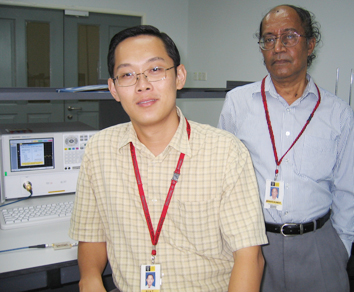KUCHING – A research project to design and build a compact, state-of-the-art radio frequency (RF) filter is being undertaken by a team of engineers at Swinburne University of Technology Sarawak Campus.
The success of the project will mean better operation for everyday wireless items such as mobile phones and wireless internet, in the future.
Expected to be completed in less than two years, the emphasis of the research project is to design a filter which is small, lightweight and enhanced with additional features which “are required for today’s communication systems such as mobile communication base stations, wireless sensors/radar systems and others,” said Dr Su Hieng Tiong, from the university’s School of Engineering and Science, who is leading the research project.
Wireless and mobile communications are undergoing a major revolution. In the market today are many emerging new technologies and each of these technologies require a frequency band on which to operate. As a result, the radio frequency spectrum has become increasingly crowded.
“This has inevitably placed stringent frequency spectrum requirements and raised the demands for high performance RF or microwave filters for modern communication systems,” said Dr Su.
“Microwave and RF filters play an important role in communication systems as they are used to discriminate between wanted and unwanted signal frequencies. High performance filters are required for good signal reception and therefore for a better system performance for mobilephones, wireless internet and so forth,” he said.
The research project is also tackling whether filters can be controlled digitally. “This relates to whether the filter will be able to filter different ranges of frequencies.
uch filters are called tuneable filters. Currently many filters are not tuneable. They can extract only one group of frequencies,” said Associate Professor Dr Manas Kumar Haldar, who is assisting with the research.
Given financial support, many of the ideas in the research project can be patented, he said, adding that the researchers had published two international conference research papers on the topic before they started the research project.
While current RF filters may be the size of a match box, the Swinburne Sarawak team is confident that their filter can be reduced to as small as a memory card of a mobilephone, which is about one centimetre by one centimetre.
To date the project, funded by the Ministry of Science, Technology and Innovation, is progressing well, said Dr Manas.
“Within nine months of the initiation of the project, the research has resulted in two international conference papers, one international journal paper and a book chapter. Further research will be reported in due course,” he said.
The project is being carried out entirely at Swinburne Sarawak, which has acquired the necessary equipment to enable RF research last year.
Dr Su said that the team is collaborating with University Putra Malaysia on the project.


